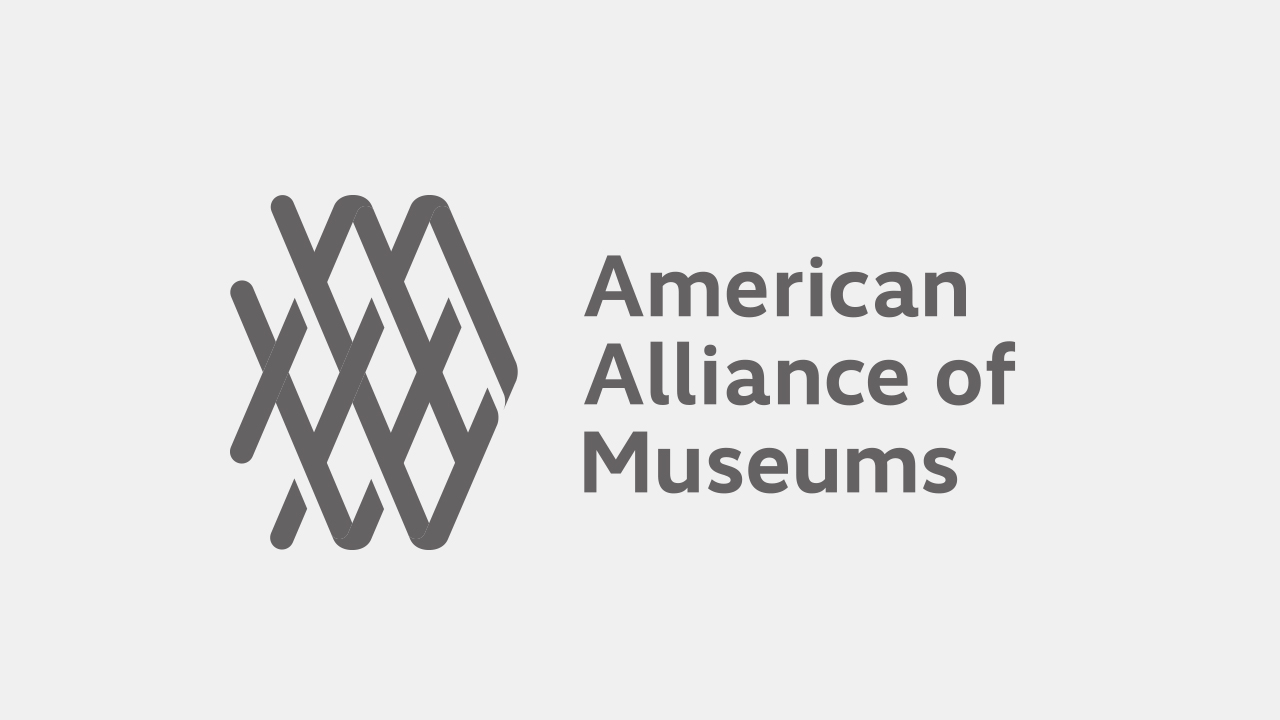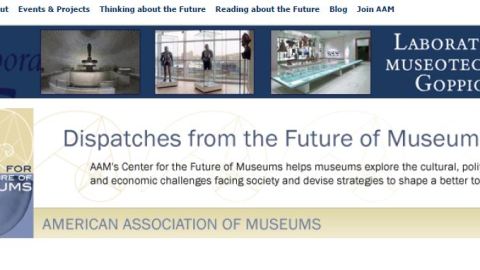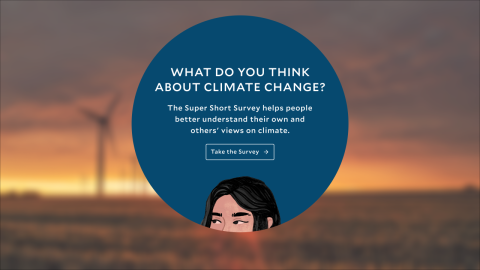
Charitable giving may fluctuate year to year, tourism ebbs and flows, your museum’s endowment will perform better some years than others. That’s normal and expected, and nonprofits have traditionally cobbled together a diverse set of income streams to buffer themselves from the vagaries of any one source. Bundled together, the four pillars of income—government, earned, charitable, and investment—create a stable base for museum operations, with one picking up the slack when another falters. However, these pillars rest on the bedrock of nonprofit status. But foresight—our early warning system for potential disruptions—suggests that growing pressure could lead to a seismic event that fractures that foundation. What are those pressures, what would the fallout look like, and how might museums prepare for such an event?
This is the final installment of a four-part series looking at the impacts of recent executive orders and actions on museum income streams. In the first three posts I looked at the direct and indirect effects of these actions on government funding, earned income, and charitable contributions and investment income. In this finale, I examine emerging threats to nonprofit and tax-exempt status—the legal structures that underpin the financial strategies of our field.
Some Context
Historically, American nonprofits have taken responsibility for many of the functions performed by government elsewhere in the world, from providing a social safety net to fostering art and culture. While the government provides critical support for this work, via grants and contracts, much of it is funded by private contributions, incentivized by charitable tax deductions. Through the Internal Revenue Code, the US has established over thirty categories of tax-exempt nonprofit organizations. The largest of these categories is 501(c)3 public benefit charity (often referred to as private nonprofits), and contains 77 percent of US museums (Museum Board Leadership: A National Report 2024, AAM).
It is hard to overstate the influence of the independent sector, as it is known, on US society, the economy, and the health of our communities. Roughly two million nonprofit organizations were registered with the IRS in 2023, and contributed more than $1.4 trillion to the US economy. As of 2022, the nonprofit workforce was nearly 12.8 million, constituting nearly 10% of all non-government employment.
The executive orders and actions of the current administration not only are damaging the financial stability of this critical sector—directly, through the cancellation of grants and contracts, and indirectly, through the impact on the economy, charitable giving, travel and tourism, etc.—there are some indications that federal policy is shifting to restrict the ability to qualify for nonprofit status or erode the financial benefits of being a nonprofit at all.
Some Signals of Change
Nonprofits have historically been secure in their tax-exempt status as long as they don’t violate any of six basic rules (helpfully outlined in the IRS publication “How to lose your 501(c)(3) tax-exempt status (without really trying).” However, it’s more common to lose nonprofit status for failing to file the basic paperwork—in 2010, the IRS removed over 275,000 nonprofits from the rolls of tax-exempt organizations, most of which, by all evidence, had simply ceased to do business.
But recently, proposals to eliminate or restrict nonprofit status have accelerated, for a combination of budgetary and policy reasons. Here are a few of these recent signals of change:
- In June 2024, the Tax Foundation published a paper titled “Reining in America’s $3.3 Trillion Tax-Exempt Economy” in which their president emeritus, Scott Hodge, proposed a rule that would require an organization to receive at least 80 percent of its income from private individuals and grants from charitable foundations in order to qualify for nonprofit status. (Currently, museums receive an average of 30 percent of their income from these sources.) Hodge also endorsed applying the 21 percent corporate income tax rate to all “program service revenue.” (For museums, that would include admissions and program fees, space rentals, etc.)
- In 2024, the House passed the Stop Terror-Financing and Tax Penalties on American Hostages Act, which would give the Treasury Secretary broad authority to designate nonprofit organizations as supporters of terrorism and revoke their tax-exempt status. (A coalition of nonprofit associations published a letter opposing the bill, pointing out how such authority could be abused.) That bill passed the House in 2024, but then died in the Senate. In 2025, the House Ways and Means Committee included a similar provision in its budget reconciliation bill, but it was removed before the legislation passed the House.
- In January, the House Ways and Means Committee prepared a report identifying various ways to pay for the tax cuts proposed in the current budgets. One item in that long list was “eliminate nonprofit status for hospitals,” yielding an estimated $260 billion in savings over ten years.
- In June, the House Committee on Homeland Security launched a probe of over two hundred nonprofit organizations that assist migrants and refugees, requiring them to disclose any aid (legal or translation services, housing, shelter, etc.) they had provided to “illegal immigrants or unaccompanied alien children.”
- Also in June, the U.S Treasury confirmed it was considering changing rules in order to allow the IRS to revoke tax-exempt status for colleges that take race into account in student admissions, scholarships, and other areas. This change could be implemented without congressional approval.
There have also been escalating attacks on specific parts of the nonprofit sector, notably nonprofit hospitals (see proposal above) and higher education. While these began with reputational attacks, they have escalated to concrete actions. The most prominent cases right now are the administration’s attacks on Columbia and Harvard Universities, using leverage ranging from cancellation of funding to banning foreign students to compel these institutions to comply with the EO banning “illegal DEI” and to foster “viewpoint diversity.” (Interesting side note: this strategy is not without precedent—in 1983 the Supreme Court ruled that the IRS was within its rights to revoke the tax exempt status of Bob Jones University for engaging in racial discrimination, which the court ruled was “contrary to a compelling government policy.”)
Even prior to 2024, there were weak signals suggesting the potential erosion of nonprofit status. In 2011 I published a summary of how various states were beginning to look to nonprofits as a source of additional income. In 2016, I drew attention to Senator Orrin Hatch’s investigation into the nonprofit status of some museums founded by individual living collectors. In 2018 I worked with a small group of museum people to develop a scenario, titled Wild Times, describing one version of 2040 in which almost all American arts and culture organizations have lost their nonprofit status due to the combined disruptions of a global pandemic, a financial crisis, and the election of a conservative president. This story was possible, if unlikely, seven years ago. Now, as the Cone of Plausibility expands into the Hemisphere of Who the Heck Knows, it is becoming more likely, in part because attacks on nonprofits are being used as a political tactic by the current administration.
What is driving this trend?
Republicans need to find money to balance the tax cuts they want to provide to wealthy Americans, businesses, and large corporations. According to one recent estimate, that totals $4.2 trillion. Why look to nonprofits as a source for those funds? As Willy Sutton said, when asked why he robbed banks, “that’s where the money is.” (Or at least some of the money, in this case.) As I noted in part three of this series, 346 of the largest charitable foundations in the US collectively hold $900 billion in assets. Harvard’s endowment alone was worth $52.2 billion in 2024; the combined value of the ten largest universities in the US is about $340 billion, and in 2021 the collective endowments of all US colleges and universities was about $927 billion.
But this focus on nonprofit endowments and operations is also driven by a political agenda—the belief held by some that philanthropy and higher education are both predominantly left-leaning and growing in their power and influence. The influence of foundations has soared in the past thirty years, reflected in the fact that they now comprise one third of charitable giving, compared to less than 7 percent in 1992 (Philanthropy 1992-2022, Dorothy A. Johnson Center for Philanthropy). Vice President Vance has characterized foundations as “social-justice hedge funds” and called the Gates and Ford Foundations “cancers upon society.” So when he proposed forcing wealthy foundations to use 20 percent of their assets each year, it was because he wanted to them to spend themselves out of existence and sunset their agendas.
Bright Spot
As the National Council of Nonprofits has pointed out, the executive branch lacks the authority to target the nonprofit status of specific organizations. The courts have blocked the administration’s efforts to interfere with Harvard’s ability to accept international students, and sixteen Republican-led states have backed Harvard’s lawsuit challenging the federal freeze on billions of dollars in funding.
Also, it has become clear in recent months that the president is attuned to public opinion. And public opinion is firmly on the side of museums:
- 97% of US adults believe that museums are educational assets for their communities.
- 89% believe that museums contribute important economic benefits to their communities.
- 96% would think positively of their elected officials taking legislative action to support museums.
- 96% want federal funding to be maintained or increased.
(Data from Museums & Public Opinion, Wilkening Consulting, American Alliance of Museums, 2018)
The president is particularly open to feedback from business leaders. In April, Trump backed down on his threats to fire Federal Reserve Chair Powell after the CEOs of major retailers warned him of the dire economic consequences of that action. What would be the “dire economic consequences” of a Wild Times scenario, in which a majority of NGOs lose their nonprofit status? When we worked on the scenario in 2018, I asked a small group of researchers, academics, and financially savvy folks to estimate the impact. They came back with some broad extrapolations:
- ~250,000 NGOs closed (that would be about 8 percent of the current nonprofit sector)
- ~8 million direct layoffs (60 percent of the NGO workforce)
- ~8 million for-profit jobs destroyed (5 percent of the for-profit workforce)
- Estimated economic damage between $20-200 billion
(To benchmark that against what is already happening, the Nonprofit Times has estimated that as of May, only four months into the new administration, over 14,000 nonprofits in the US were at risk of exhausting their cash within three months, if they lost their federal grant funding, endangering nearly 2.8 million jobs.)
Museums might consider who in their orbit—board members, donors, influential community members—might make the case to the president that the consequences of effectively dismantling the nonprofit sector would be economically unsustainable.
Something to Watch
If nonprofit status itself comes under attack, then what? Some organizations are exploring options. One provision of the Meet The Moment Pledge, is to “Explore funding beyond the conventional 501c3 structures, such as LLCs, 501c4s, fiscally sponsored organizations, mutual aid networks, and donor circles. If you have partners that are particularly vulnerable to targeting, support them in identifying fiscal sponsorship or other alternative structures that can provide them with greater protection from potential threats.” Essentially, the Trust-based Philanthropy Project (parent of the pledge) is admitting that in coming years, nonprofit governance may, in and of itself, become a risk factor, requiring nonprofits to look for alternate structures to shield their funds.
Ending on an Up Note
I promised when I launched this series that if you stayed with me, I would offer some words of hope in conclusion. I admit that’s a challenging promise to keep: the bad news often seems overwhelming, the bright spots few and far between. The president has issued 165 executive orders (up from 139, when I delivered this talk in May) the National Council of Nonprofits continues to tally the effect the orders are having on nonprofits. Many of the most damaging actions are being challenged, thanks to nonprofit advocates (including museums), though it will take a long time for the issues to wind their ways through the courts. We also are waiting to see whether the administration will comply with the final rulings. Even successful challenges to executive orders and actions will leave in their wake damage that is difficult to repair. How, in the face of these forces, can ordinary citizens, our organizations, the nonprofit sector, make a difference?
It may be no surprise that I found my answer to that challenge in data, research, and a little math.
In 2011, Harvard researchers Erica Chenoweth and Maria Stephan published a study of non-violent civil resistance campaigns from 1990-2006. They found that every campaign that mobilized at least 3.5 percent of the population in sustained protest was successful. (I highly recommend this TEDx talk from 2011 in which Dr. Chenoweth talks about the “3.5 percent rule” and what she has learned about successful civil protest.)
When I read that research, I brought up my web browser, whipped out my calculator, and ran some numbers. It turns out that there are:
About 12.8 million NGO workers in the US
Out of a total US population of 340 million
12.8 million ¸ 340 million = 3.7%
Per Chenoweth’s rule, if museum people join with all their nonprofit brethren, and speak with a united voice, we are an unstoppable force.
If we focus on the things we agree on—that the nonprofit sector is the essential backbone of the nation, that we provide nonpartisan support to all communities across the country, that we make America healthier, happier, and better educated—we can prevail.
WE GOT THIS, PEOPLE.
Yours in optimism and solidarity,

Elizabeth Merritt, VP Strategic Foresight and Founding Director, Center for the Future of Museums, American Alliance of Museums







